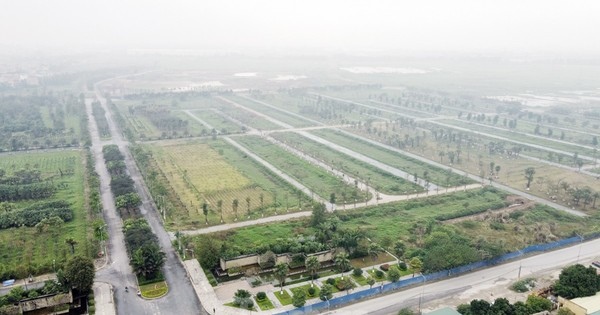The Ho Chi Minh City Real Estate Association (HoREA) has recently submitted a document to the Prime Minister and the Ministry of Planning and Investment regarding the “Draft Decree Detailing Several Articles and Enforcement Measures of the Bidding Law on Selecting Investors for Investment Projects Using Land”.
Notably, HoREA proposes a clear distinction between “bidding for projects using land to select investors” and “auctioning land use rights” and “bidding to select construction contractors for construction works”. The most significant difference in “bidding for projects using land to select investors” is to select the most capable investor. Primarily, the investor must have the best financial capacity and propose the most feasible and reasonable solutions, plans, and progress for project implementation.
 HoREA proposes a clear distinction between bidding and auctioning. |
According to HoREA, both methods of “bidding for projects using land to select investors” and “auctioning land use rights” aim to select the most capable investor. However, each method has additional specific purposes.
The “auctioning land use rights” method aims to select the investor who offers the highest price, or in other words, “sells” the land use rights at the highest price to generate revenue for the state budget.
In contrast, the “bidding for projects using land to select investors” method aims to select the highest quality investment project that will yield the most significant socio-economic benefits and choose the most capable investor, who must demonstrate financial strength and propose the most feasible and reasonable solutions, plans, and progress among the bidding investors.
HoREA also notes that the current regulations in the 2024 Land Law only allow investors to negotiate the transfer of land use rights or who currently have land use rights or land for residential purposes to implement commercial housing projects. Therefore, the “bidding for projects using land to select investors” method can be considered the primary, most important, and most feasible land acquisition method for investors to carry out large-scale urban area and commercial housing projects.
Under a mechanism similar to public-private partnership, the winning investor advances capital to the competent state agency to carry out compensation, support, and resettlement tasks. According to the regulations in the 2024 Land Law, within 36 months from the date of the decision recognizing the winning bid or another period specified in the contract signed with the competent state agency, the competent People’s Committee must complete the compensation, support, and resettlement to hand over land or lease land to the winning investor.
HoREA also observes that the “bidding for projects using land to select investors” method is implemented in two cases: a land plot or area with a detailed plan at a scale of 1/500 or a land plot or area with only a分区规划at a scale of 1/2000.
In the case of a land plot or area with a detailed plan at a scale of 1/500, detailed construction planning indicators have already been determined, giving investors less opportunity to demonstrate creativity in developing investment projects for bidding.
In the case of a land plot or area with only a分区规划at a scale of 1/2000, investors have more opportunities to showcase their creativity in developing investment projects for bidding.
Thus, the “bidding for projects using land to select investors,” typically in the case of a land plot or area with only a分区规划at a scale of 1/2000, has specific purposes that differ from the “auctioning land use rights” method.
Firstly, to select the highest quality project with the best design, architecture, highest land use efficiency, and most significant socio-economic benefits, meeting green and circular economy standards.
Secondly, to select the most capable investor, who must foremost possess financial strength and propose the most feasible and reasonable solutions, plans, and progress among the bidding investors.
Thirdly, the investor proposes the highest compensation, support, and resettlement costs (if any).
Fourthly, the investor proposes the highest payment to the state budget as per the bidding documents and voluntarily proposes the highest additional payment to the state budget beyond the requirements of the bidding documents (if any).
In addition, HoREA identifies differences between “bidding for projects using land to select investors” and “bidding to select construction contractors for construction works”. However, the draft Decree’s regulations apply similar provisions on experience requirements or technical proposal documents or assessment criteria for experience or technical assessment to select investors for projects using land, with the evaluation score for capacity and experience accounting for 20% to 30% of the total score, similar to the regulations on “bidding to select construction contractors for construction works”. This approach is inappropriate and does not align with the specific case of “bidding for projects using land to select investors”.
When implementing the “bidding for projects using land to select investors” method, it is crucial to focus on evaluating the two most important criteria: First, assessing the most capable investor, primarily with the strongest financial capacity; Second, the investor proposes the most feasible and reasonable solutions, plans, and progress for project implementation among the bidding investors.
Ninh Phan













